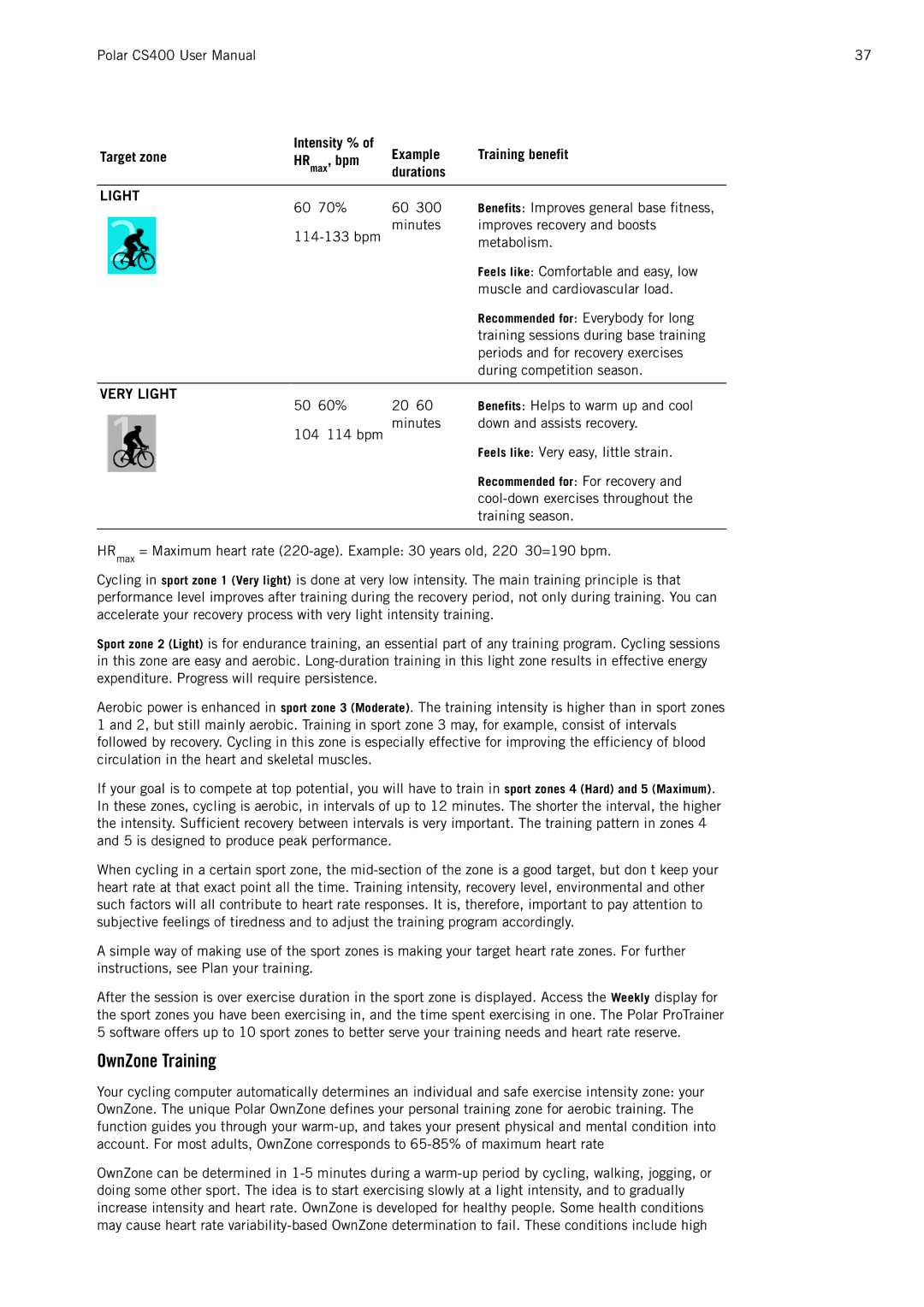
Polar CS400 User Manual | 37 |
| Intensity % of | Example | Training benefit |
Target zone | HRmax, bpm | ||
| durations |
| |
|
|
| |
|
|
|
|
LIGHT | Benefits: Improves general base fitness, | ||
| |||
| minutes | improves recovery and boosts | |
|
| metabolism. | |
|
|
| |
|
|
| Feels like: Comfortable and easy, low |
|
|
| muscle and cardiovascular load. |
|
|
| Recommended for: Everybody for long |
|
|
| training sessions during base training |
|
|
| periods and for recovery exercises |
|
|
| during competition season. |
|
|
|
|
VERY LIGHT | Benefits: Helps to warm up and cool | ||
| |||
| minutes | down and assists recovery. | |
|
|
| |
|
|
| Feels like: Very easy, little strain. |
|
|
| Recommended for: For recovery and |
|
|
| |
|
|
| training season. |
|
|
|
|
HRmax = Maximum heart rate
Cycling in sport zone 1 (Very light) is done at very low intensity. The main training principle is that performance level improves after training during the recovery period, not only during training. You can accelerate your recovery process with very light intensity training.
Sport zone 2 (Light) is for endurance training, an essential part of any training program. Cycling sessions in this zone are easy and aerobic.
Aerobic power is enhanced in sport zone 3 (Moderate). The training intensity is higher than in sport zones 1 and 2, but still mainly aerobic. Training in sport zone 3 may, for example, consist of intervals followed by recovery. Cycling in this zone is especially effective for improving the efficiency of blood circulation in the heart and skeletal muscles.
If your goal is to compete at top potential, you will have to train in sport zones 4 (Hard) and 5 (Maximum). In these zones, cycling is aerobic, in intervals of up to 12 minutes. The shorter the interval, the higher the intensity. Sufficient recovery between intervals is very important. The training pattern in zones 4 and 5 is designed to produce peak performance.
When cycling in a certain sport zone, the
A simple way of making use of the sport zones is making your target heart rate zones. For further instructions, see Plan your training.
After the session is over exercise duration in the sport zone is displayed. Access the Weekly display for the sport zones you have been exercising in, and the time spent exercising in one. The Polar ProTrainer 5 software offers up to 10 sport zones to better serve your training needs and heart rate reserve.
OwnZone Training
Your cycling computer automatically determines an individual and safe exercise intensity zone: your OwnZone. The unique Polar OwnZone defines your personal training zone for aerobic training. The function guides you through your
OwnZone can be determined in
